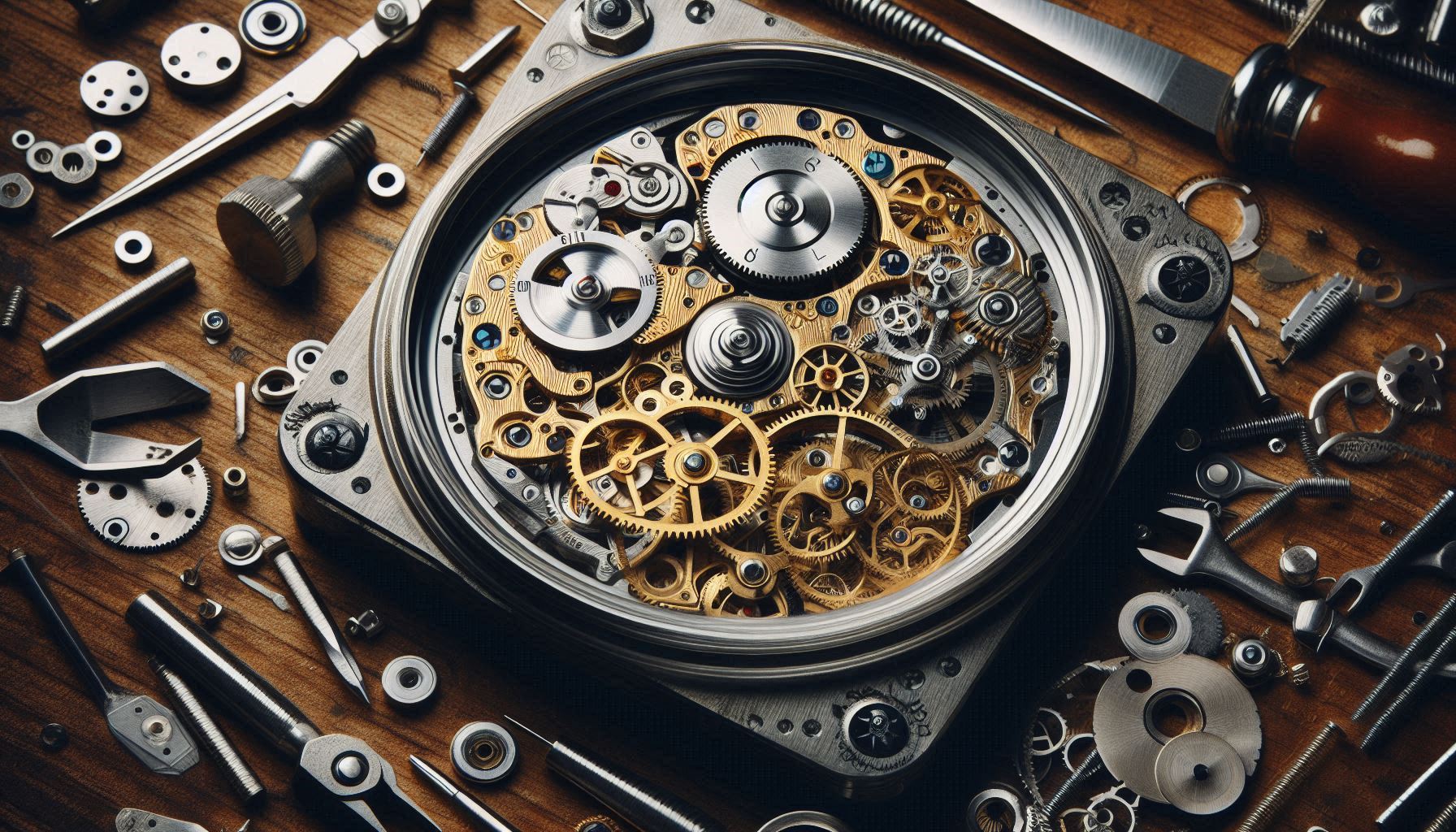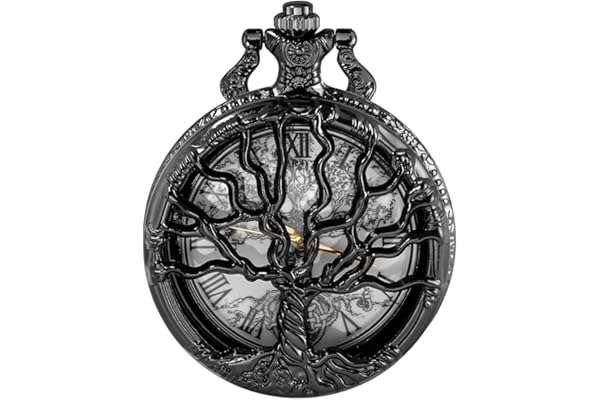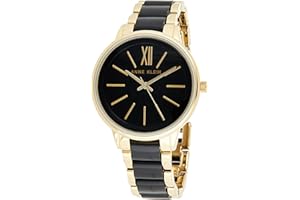The Most Popular Watch Movements: Quartz vs. Mechanical
Contents
Introduction to Watch Movements
Watches have been an integral part of human culture for centuries, evolving from simple time-telling devices to intricate pieces of art and engineering. At the heart of every watch lies its movement, the mechanism that keeps time and powers the watch’s functions. Understanding these movements is crucial for anyone interested in horology, whether as a casual wearer or a dedicated collector.
The two main categories of watch movements are quartz and mechanical, each with its unique characteristics and history. Quartz movements, known for their accuracy and affordability, revolutionized the watch industry in the late 20th century. Mechanical movements, on the other hand, are celebrated for their craftsmanship and tradition, often found in luxury watches that are as much about artistry as timekeeping.
In this article, we will delve into the intricacies of these two types of movements, comparing their features, benefits, and the reasons why one might choose one over the other. Whether you’re drawn to the precision of quartz or the allure of mechanical craftsmanship, understanding these movements is key to appreciating the watch on your wrist.
Beyond the technical aspects, watch movements also reflect broader trends in technology and society. The quartz crisis of the 1970s, for example, was a pivotal moment in the watch industry, reshaping how watches were made and marketed. Meanwhile, the resurgence of interest in mechanical watches in recent decades speaks to a broader appreciation for traditional craftsmanship in an increasingly digital world.
Quartz Movements: Precision and Innovation
Quartz movements represent a significant leap forward in watchmaking, offering unparalleled accuracy and reliability. Introduced in the 1960s, quartz watches quickly gained popularity due to their low cost and minimal maintenance requirements. Unlike mechanical movements, which rely on a complex system of gears and springs, quartz movements use an electronic oscillator regulated by a quartz crystal to keep time.
The quartz crystal in the movement vibrates at a precise frequency when subjected to an electrical current, typically 32,768 times per second. This consistent vibration is converted into a regular time signal, which powers the watch hands or digital display. The result is a watch that can maintain accurate time with minimal deviation, often within a few seconds per month.
One of the most significant advantages of quartz movements is their affordability. The simplicity of the mechanism and the widespread availability of components make quartz watches accessible to a wide range of consumers. This democratization of timekeeping technology has allowed people from all walks of life to enjoy precise and reliable watches without breaking the bank.
Moreover, quartz movements have paved the way for a variety of innovations in watch design. From ultra-thin watches to multifunctional digital displays, quartz technology has expanded the possibilities for watchmakers, enabling them to create watches that cater to diverse tastes and needs. This versatility has cemented quartz movements as a staple in the watch industry, appealing to both casual wearers and serious enthusiasts.
Mechanical Movements: Craftsmanship and Tradition
Mechanical movements are the epitome of watchmaking artistry, embodying centuries of tradition and craftsmanship. Unlike quartz movements, mechanical watches are powered by a mainspring, which must be wound either manually or automatically through the wearer’s natural wrist motion. This energy is transferred through a series of gears and springs to power the watch, making mechanical watches a marvel of engineering.
One of the most appealing aspects of mechanical movements is the meticulous craftsmanship involved in their creation. Each component, from the gears to the escapement, is carefully crafted and assembled, often by hand, by skilled watchmakers. This dedication to detail and precision is what sets mechanical watches apart, making them highly sought after by collectors and enthusiasts who appreciate the artistry and skill involved.
Mechanical movements are also known for their longevity and durability. With proper care and maintenance, a mechanical watch can last for generations, becoming a cherished heirloom. This longevity, combined with the intrinsic value of the craftsmanship, often makes mechanical watches a worthwhile investment for those who appreciate fine watchmaking.
Despite the rise of quartz technology, mechanical watches have experienced a resurgence in popularity in recent years. This can be attributed to a growing appreciation for traditional craftsmanship and a desire for unique, artisanal products in an increasingly mass-produced world. Mechanical watches offer a tangible connection to the past, allowing wearers to carry a piece of horological history on their wrist.
Comparing Quartz and Mechanical Movements
When comparing quartz and mechanical movements, it’s important to consider the distinct advantages and limitations of each. Quartz movements are celebrated for their precision and low maintenance, making them ideal for those who prioritize accuracy and convenience. Their affordability also makes them accessible to a broad audience, allowing more people to enjoy the benefits of wearing a watch.
In contrast, mechanical movements are prized for their craftsmanship and aesthetic appeal. The intricate workings of a mechanical watch, visible through an exhibition case back or a skeleton dial, offer a unique visual experience that quartz watches cannot replicate. For many enthusiasts, the allure of owning a finely crafted mechanical timepiece outweighs the need for absolute precision.
Another key difference lies in the maintenance and care required. Quartz watches generally require minimal upkeep, with battery replacements being the most common maintenance task. Mechanical watches, however, require regular servicing to ensure their longevity and optimal performance. This can be seen as a drawback or a point of engagement, depending on the wearer’s perspective.
Ultimately, the choice between quartz and mechanical movements comes down to personal preference and lifestyle. Some may prefer the accuracy and ease of quartz, while others are drawn to the heritage and artistry of mechanical watches. Understanding the unique qualities of each movement can help individuals make an informed decision that aligns with their values and needs.
The Future of Watch Movements
The future of watch movements is an exciting prospect, as technology continues to advance and consumer preferences evolve. While quartz and mechanical movements have dominated the watch industry for decades, new innovations are emerging that could reshape the landscape of horology.
One such innovation is the development of hybrid movements, which combine elements of both quartz and mechanical technology. These movements aim to offer the best of both worlds, providing the accuracy of quartz with the craftsmanship and aesthetic appeal of mechanical watches. Hybrid movements are still in their early stages, but they hold promise for those seeking a balance between tradition and modernity.
Another trend to watch is the integration of smart technology into traditional watch designs. While smartwatches have their own category, there is potential for traditional watchmakers to incorporate smart features into mechanical or quartz watches without compromising their classic appeal. This could involve features like fitness tracking, notifications, or solar charging, adding functionality to traditional timepieces.
As consumer preferences continue to shift, sustainability is becoming an increasingly important consideration in watchmaking. Both quartz and mechanical watches have their environmental impacts, from battery disposal to the sourcing of materials. The industry is beginning to explore sustainable practices, such as using recycled materials and developing eco-friendly movements, to meet the demands of environmentally conscious consumers.






